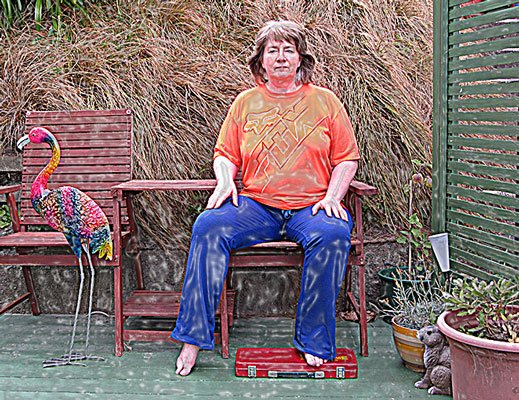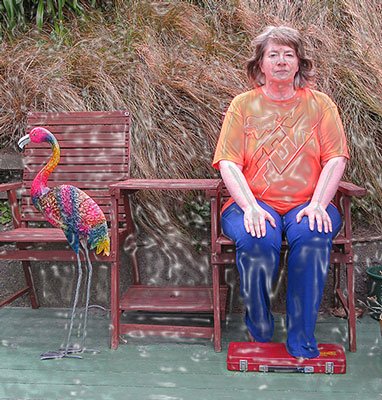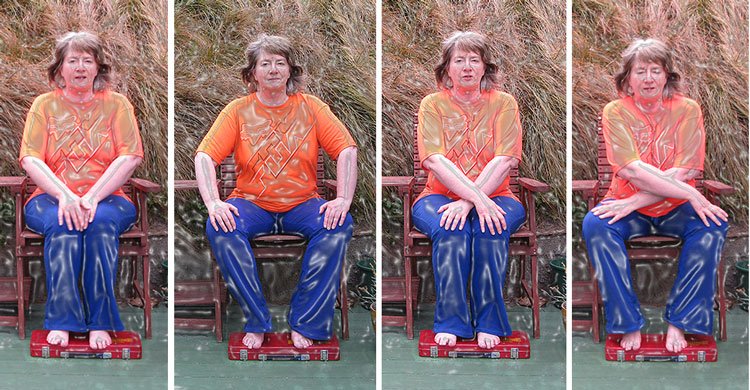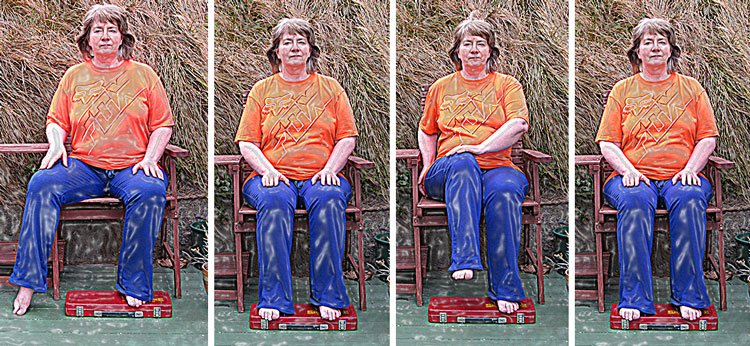Exercises suitable for seniors, those who are disabled, people with arthritis, chronic fatigue or illness, recovering from strokes or heart attacks.
Every Monday morning I lead an exercise class for seniors with arthritis. The main point of the class is to thoroughly but gently mobilise all the joints for about 45 to 50 minutes. The secondary gain is that we get to enjoy some great songs and have fun! Most of the time we’re seated (in chairs) but with two songs standing behind the chairs.

The exercises I use in this class are also suitable for other conditions. We have had people with rheumatoid arthritis, recovering from strokes or hearts attacks, with MS, with chronic fatigue and getting back into moving after not exercising for a while.
There are lots of different exercises suitable for these groups of people, including Tai Chi, Chair Yoga and water based exercise. These ones can be done very gently and even the sickest person can usually do at least some. Though I have to admit, I work my classes to the level they can handle!
The equipment needed is a straight backed chair that enables you to sit up straight with your feet flat on the ground. In some hand exercises, we also use a hat or a scarf.
Although the class is watching me to follow the movements, I verbally cue them to what’s coming next, on the last count or two of the previous exercise.
In this first post, I’m going to cover the basic exercises for legs, hips and knees. We come back to these basic exercises in nearly every song.
Exercises for legs & hips
Starting position

Sit with back upright, and feet flat on the floor, knees at right angles.
Leg Straightens
Keeping the upper part of the leg on the chair, lift the lower part, straightening the leg.
Usually we bring it straight back down, but an optional extra is to hold for a couple of seconds in the extended state.

Another option – raise the opposite arm to shoulder height.
Knee lifts
From the same position, bring the upper part of the leg up, keeping the leg bent. In fact, the leg will bend a little more. Touch just above the knee with the opposite hand.

Legs to the side (abduct)
The knee stays at 90 degrees and the leg moves to the side, from the hip. I usually lift my foot a little, with just the big toe touching the floor, so that the leg isn’t pressing quite so much into the chair, making it easier to slide open.

Usually we do twice on one leg, then the other. Though in a slower song, we may alternate.
You will need to watch the class’s technique on this one, to make sure they’re not just moving the lower leg from the knee. Tell them not to be ladylike!
Tap foot under chair
From the usual starting position, bend the knee a bit more to tap the toe of the foot under the chair. If the music is fast, do it at half time (ie use 2 counts instead of one, in each direction).

Knees opening and closing
Lean forward slightly from the hips to rest the hands on the knees. Keeping the feet on the same spot, open the knees, letting the heels swivel in a bit. The first time, keep the hands on the same knee. The second time, cross the hands. Do this fairly slowly, to protect the knees.

Toe tap front, side, front, together
Tap the toe of the foot forward ~ take the leg out to the side ~ back to forward position ~ back to the start position. Repeat on the other side.
When we’re just going to tap forward, my verbal cue is “toe taps”. When we’re going to do this more complicated one, I call them “foot taps”.

Other Variations
These are thrown in occasionally to make things a bit more interesting and to stimulate the brain, so it’s not on auto pilot. But they are still combinations of the main exercises.
Foot taps, plus knee lifts – Do the 4 count foot tap exercise on one side (let’s say the right), then do two knee lifts (left, then right). Then repeat on the other side.
Walking on the spot – one foot goes down while the other lifts up a little, for the counts of 1, 2, 3, then the 4th count is a knee lift, or maybe a heel tap. The lift puts us on the correct foot to start on the other side.
Cha cha – one foot taps under the chair (count 1), the other taps on the spot (count 2), then the cha cha cha is like the 1, 2, 3 of walking on the spot but faster (counts 3, and, 4). I use this step in “Singing in the Rain” by Gene Kelly.
Waltz step – side, behind, side ~ side, behind, side. The side is a partial abduct, and the behind is tapping under the chair. This one gets used in “I’ll Have This Dance” by Anne Murray.
To Can Can music, we do a knee lift, followed by a straighten, to be a variation of “knee lift, kick”.
In “Boomps a Daisy” we do an abduct, followed by a knee lift, then go to the other side. I also use this in “The Gypsy Rover” by the Irish Rovers.

Thanks for reading
Follow me for more health, nutrition, food, lifestyle and recipe posts.

[I offer one on one nutritional coaching or EFT (Emotional Freedom Technique) sessions by Skype. Bitcoin, Steem or Paypal accepted. Contact me in Discord or SteemitChat.
Some of my previous posts on HEALTH & LIFESTYLE:
• Sleep like a kitten Part 1 – 3 tips
• Sleep Well Part 2 – What’s your sleeping style?
• Sleep Well Part 3 – Resetting your body clock
• Thoughts about Breast Health
• I’ve got a cold & how to handle it
• Overcoming my fears
• Positivity Challenge 4 – Emotional Freedom Technique Part 1
• EFT Part 2 – Getting started
• Six days training in a new natural therapy
• Quick & Easy calming tip
• EFT Tapping videos for Xmas stress


